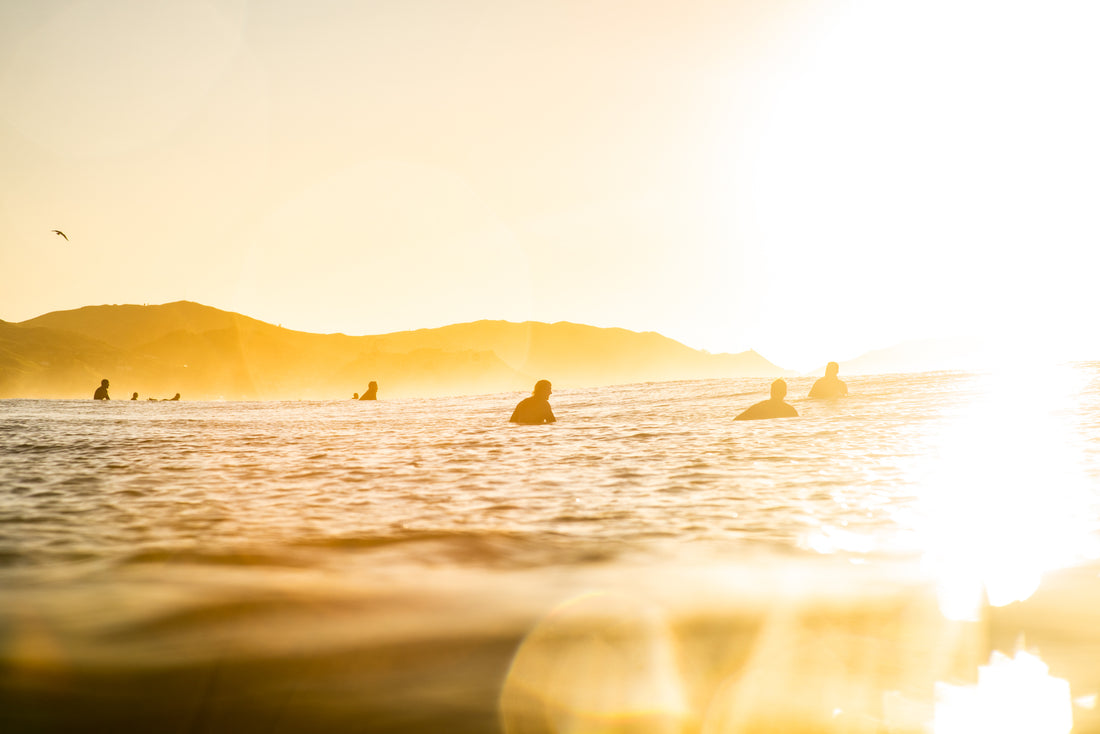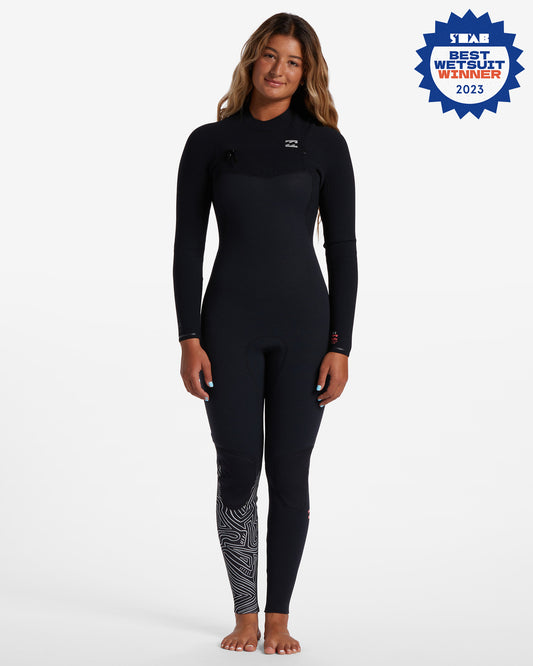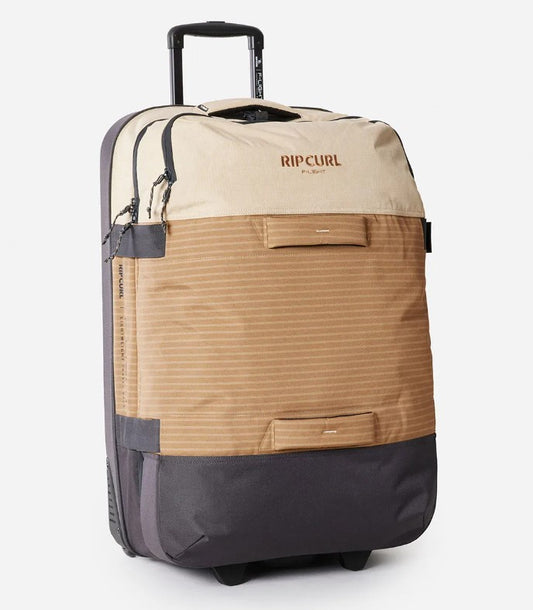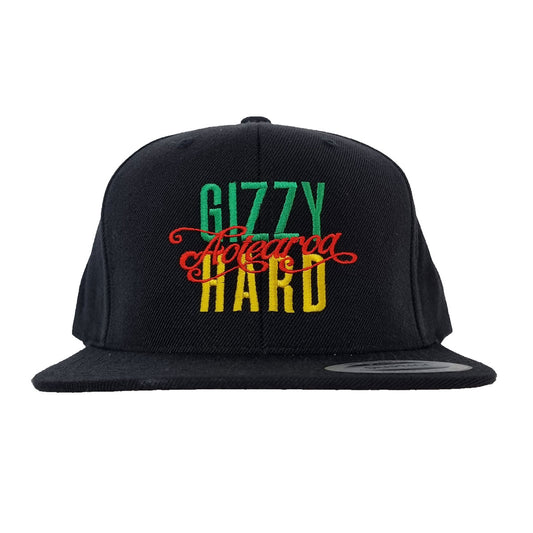Getting into a new sport or hobby can be nerve-wracking, especially one like surfing, where you seemingly get thrown into the deep end as soon as you start. Surfing can be very daunting and can be dangerous. That's why we've designed this guide for beginners like you, so you can wade out into the waters with some key pointers in mind, knowing that we have your back.
From choosing the right equipment to catching your first wave, join us as we cover essential tips on how to surf for beginners.
Choosing the Right Equipment
Surfboard
Generally, we recommend complete beginners start with a larger board like a longboard or larger funboard or softboard as they are more stable and easier to balance on, making them ideal for learning the fundamentals of surfing. If we took you for your first lesson we would certainly be using a large board to hopefully get you to your feet successfully with a bit of assistance. If you go too small it is going to take you a lot longer to get the absolute basics mastered and it will likely put you off surfing. The greater stability with the larger boards makes it easier for beginners to catch and ride as many waves as possible; the more waves you catch, the quicker you'll progress.

Soft-top surfboard in NZ is also a great choice not solely due to its stability but also the softer foam construction. The design helps reduce the risk of injury, which is especially important for beginners who are more likely to wipe out and get hit by or land on their board as they master the basics.
Leash
A surfboard leash, often called a leg rope, is an essential accessory that keeps the surfer and the board connected. If you fall off your board or wipe out, the leash makes it easier to retrieve your board, preventing it from drifting away and reducing the risk of injury to yourself and others. An untethered board can become a dangerous projectile if a wave catches it and sends it hurtling towards someone close by. Inspite of leash use you still need to be aware of those around you e.g a 9 foot board with a 9 foot leash has minimum 18' risk area without including any extra wave drag. Never ditch your board if it puts someone else in danger! We recommend leashes from well-known brands like FCS , Ocean and Earth or Creatures of Leisure.

While our beginner surfing guide touches on the very basics of choosing equipment, don't hesitate to ask for advice from experienced surfers (especially surf instructors who deal with beginner surfers on a regular basis) or professionals at your local surf shop. Be aware though that not every experienced surfer has a good breadth of knowledge of beginner's surfing equipment. Each surfer will have different requirements based on usage, location, and experience. At Blitz, we'll provide valuable insights based on your needs and the local surf conditions. Contact us for one-on-one advice on choosing the right surfboard.
Picking a Good Spot
Conditions can change rapidly in the ocean. Knowing how to swim is a crucial aspect that helps beginner surfers stay afloat and navigate safely in the water when things go awry. Strong swimming surfers can paddle out to the lineup, catch waves, and return to shore more efficiently, even when faced with challenging surf conditions or unexpected wipeouts.
When you are beginning we recommend choosing beaches where there are other people around as an extra precaution, or nearby to a surf-lifesaving club; if you misjudge the surf conditions and things go sideways, you will have an additional safety net. Always take your time to survey the conditions and make sure you're comfortable with them before heading out. With practice and experience, you'll learn to trust your judgement.
Good spots to learn to surf in Gisborne as long as conditions are favourable are Roberts Road, Midway Beach and Northern Makorori. Powerful beachbreaks like Wainui Beach are often not suitable for learning to surf due to the power and speed of the waves
Consider these factors when selecting a surf spot:
- Wave Size:Choose beaches with smaller, mellow waves, particularly when you're a beginner. Large, powerful waves can be overwhelming and dangerous for those just starting. Never overestimate your ability
- Currents and Rips: Keep an eye out for discoloured water and unusually calm areas at a surf beach, which may indicate strong currents that can pull you away from the shore. Opt for spots with minimal or manageable currents. Even though it is daunting to be in breaking surf when there is a calm area nearby, often this can be the safest spot for beginner surfers to just stay in the whitewash and not get washedout to sea
- Hazards:Be aware of hazards such as rocks, reefs, crowds or wildlife. Avoid going to popular or more crowded areas in favour of spots where the waves look good for your level, especially if the surf is pumping and it is crowded with competent surfers. It is unlikely you will get any waves and you will probably disturb other people's surf
- Wind:Understand how tides and wind affect wave conditions and learn how to read surf forecasts. In calm or light winds, the wind direction doesn't matter much, and the waves are smooth. In stronger wind conditions, offshore winds, blowing from the land to the sea, are great because they shape and smoothen the waves. However, if the wind is too strong (over 20 knots), it can make it difficult to catch a wave. Onshore or sideshore winds make waves bumpy and the stronger the wind gets the waves get less surfable
- Respect Warning Signs and Flags: At a patrolled surf beach you cannot surf between the red and yellow lifeguard flags. This is a designated safer swimming area that is being patrolled and is likely to have more human hazards. Staying in more popular areas close to patrolled parts of the beach can ensure that help is nearby in emergencies. Watch out for signs erected by local councils for hazards like pollution or anything else
- Local Knowledge:Seek advice from local competent surfers or lifeguards. They can provide insights into the best spots for beginners, as well as current conditions and hazards to watch out for.
- Don't Surf Alone: Surfing with more experienced surfers can help you navigate the waves. They will offer guidance, support, and safety if needed. Even surfing with another beginner gives you support or someone to seek help if you should get in trouble

Getting out in the Surf
Nailing the swimming basics and being a competent swimmer is pretty essential when learning how to surf. This makes paddling much easier and keeps you safer. Practice mindful swimming by emphasising efficiency and technique over brute strength; learn to swim smarter, not harder. Realistically if you are going to paddle out the back to catch waves you should be able to swim comfortably at least twice that distance to allow for current and drag should you lose your board e.g if the waves are breaking 200m offshore you should make sure you are able to swim at least 400m
Keeping your body long and horizontal and focusing on efficient strokes will help you achieve a streamlined position in the water, which is crucial for reducing drag. Maintain rhythmic and relaxed breathing patterns to maintain a steady stroke and reduce anxiety while swimming. If you are caught in a rip do not try to swim against it, either swim sideways across the rip if you are able or float till the current dies then try to swim in away form the rip
Nail the Technique
Paddling: Paddling and balancing on your board prone are the first things you need to master. Start by paddling out on your board. You should be lying in a position that keeps the nose of the board just out of the water, not too much and not going under, so your board stays flat and streamlined. Paddle with each arm alternately, keeping your fingers together and cupped. Maintain a strong and steady stroke while using your core and leg muscles to generate power. Pull the stroke through close to your board not wide

Duck Diving: Duck diving is a technique used to get through breaking waves when paddling out. It involves pushing the front of the board underwater by grabbing the rails, then sinking the tail with your knee and using body leverage to counteract the wave's force. This crucial technique allows surfers to efficiently get under the breaking wave and continue paddling towards their destination. This takes time to learn and is unlikely you will be able to do it on a high volume beginners board so check Eskimo Rolls and Bailing as the next options
Turtle Rolls (Eskimo Rolls): This technique is particularly useful for longboard surfers or when duck diving isn't an option. Turtle rolls help you get past breaking waves while paddling out to the surf lineup. It involves flipping the surfboard upside down, aiming the nose of the board at the incoming wave and holding onto it while passing under the breaking wave.
Bailing: This is simply ditching your board and is the most likely way you will be navigating your way out through waves that you are unable to paddle through. This is where a strong leash is key so you can let go of your board knowing you are not going to need to swim to the beach to get it back. Be mindful of those around you, if there is someone in your line of fire, DO NOT DITCH YOUR BOARD! Out of respect for other people you need to hold your board and probably get knocked around a bit by the wave
Catching a Wave: Where you position yourself while waiting for waves significantly influences the quality of the waves you'll catch. Observe more experienced surfers and where they position themselves during take-off. You should aim to take off at the wave's peak or as close to it as possible. This approach optimises your ride by allowing you to catch the wave at its steepest point. Realistically you will be in the whitewash when you start out so best to make sure the wave has broken before you try to catch it so you don't get dumped head first
Positioning and Timing: To catch unbroken waves being in the right position and having a quick reaction time are crucial. When you see a suitable wave approaching, paddle to match its speed and angle. A good rule of thumb for beginners is to paddle towards the shore slightly angled towards the breaking part of the wave. This way, you'll be in the "take-off zone" when the wave arrives.
Popping Up: Once you feel the wave lifting your board, it's time to pop up. Place your hands flat on the board near your chest, keep your body low, and push up while swinging your legs around and under you. Land with your feet shoulder-width apart, knees bent, and looking ahead. It is good to learn how to pop up early in your surfing life, getting on to your knees first is a bad habit to develop as this will hinder your surfing progress.
Balance, Control, and Stance: Maintain a low, athletic stance with your weight evenly distributed on both feet, keeping hips and knees bent and relaxed. Keep your arms extended for balance. As you ride the wave, practice small adjustments to control your direction and speed. Weight on your front foot increases speed, weight on your back foot assists turning.
Falling: Falling is a part of surfing. If you feel you're about to wipe out, try to fall away from your board to avoid getting hit. Protect your head when you come up as your board might be still in the air and keep a relaxed body posture to minimise the risk of injury. Remember, it's important to fall safely to protect yourself and others in the water. If someone is in your way and you can't avoid them try to grab your board and drop right off it. Don't ride into them!
Practice Makes Perfect
Surfing is a skill that takes time to master. It really is a difficult sport to make progress in but is extremely fun and rewarding even as a complete beginner. Begin your surfing journey in small, gentle waves. These conditions are less intimidating and allow you to build confidence in a more controlled environment. Don't get discouraged by wipeouts or missed waves. Keep practising and building your confidence in the water. Hours spent in the water are the most important thing for your surfing journey
Avoid the temptation to tackle challenging waves too soon. Take the time to master the fundamentals in smaller surf before moving on to bigger waves. Be aware of your limitations and respect your comfort zone. It's perfectly fine to skip a session if you don't feel ready for the conditions. Remember perfect looking waves are often the most powerful either breaking in shallow water with unseen hazards or just being too powerful for a beginner. You are not going to ride barreling waves when you are learning.
Fear and anxiety are common emotions for beginner surfers as they venture into the water. Take deep breaths and remind yourself that surfing is a gradual learning process. Conquering your fear is very rewarding and everyone has different levels of fear and what causes it
Connect with experienced surfers at your local beach. They can give you access to valuable advice, help you understand local conditions, and share their knowledge about the best spots for beginners.
If you're committed to learning, why not enrol in surf lessons with certified instructors? They can provide structured guidance, safety tips, and feedback on your technique.
Surfing is a journey, and there is no need to rush. The ocean will always be there, waiting to envelop you in calming waves. Take time to build your skills, confidence, and comfort level in the water before tackling larger waves.
Conquer the Waves
The world of surfing offers a unique and exhilarating experience, and for beginners, it's an exciting journey filled with challenges and rewards. Embrace the wipeouts, relish the small victories, and never forget that every surfer was once a beginner. Your first ride is just the beginning of a lifelong relationship with the sea. Grab your board, feel the stoke, and let the waves guide you on this unforgettable path.
Start your surf journey today by shopping online for a high-quality surfboard, surfing accessories, or other gear like stand-up paddle boards from Blitz Surf Shop. If you're in the Gisborne area, don't be a stranger. Pop in for a chat or more information on surfing tips for beginners!




